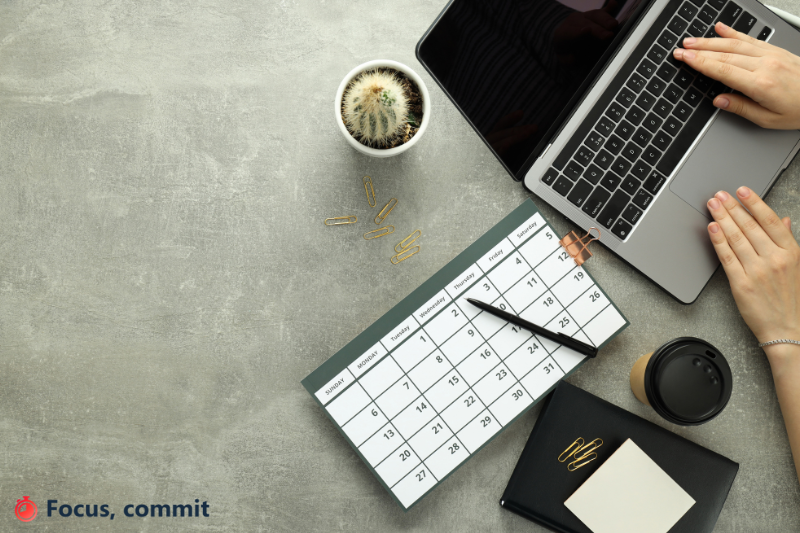There are two schools of thought when it comes to multitasking: those who believe it is an essential skill for getting things done and those who believe it is a waste of time and leads to distractions. If you are in the latter camp, the best way to eliminate distractions and get things done is to monotask.
Are you trying to focus on a task but keep getting distracted? You’re not alone. In today’s world, focusing on one thing is hard when there are so many distractions. But there is a way to focus and eliminate distractions: monotasking.
What is Monotasking?
Monotasking is a simple concept that can be challenging to implement. Essentially, it means focusing on one task at a time. However, achieving this singular focus can take more work than it sounds. The idea behind monotasking, as a time management approach, is to dedicate your full attention to a specific, well-defined task for a set period.

The ultimate goal of monotasking is to reach a state known as “deep work”. Deep work involves immersing yourself completely in a demanding task that requires intense concentration. During deep work, distractions are minimized or eliminated, allowing you to work on this task without interruption for an extended period.
Monotasking is about reevaluating how we work and changing our habits and mindset. It can be a challenge, especially if you’re used to multitasking. However, straightforward strategies can help you transition to a more productive work style. While apps and tools are available to assist with these strategies, the most significant shift often involves changing your habits and focusing on one task at a time for better results.
Monotasking vs. Multitasking
Monotasking may solve multitasking if our brains can’t do it. It can reduce overwork and make us feel more accomplished daily.
Multitasking can lead to decreased productivity in most cases and for most people. We do two, three, or four tasks poorly and do them all well. Instead of focusing on one study and being creative, we should multitask.
For me, this has been true. It’s easy to see why I feel so tired. My hectic schedule involves moving from one meeting to another, trying to squeeze in ten minutes to check my email or do some real work. My most relaxing days consist of focusing on one task, often writing articles like this one. Then, relaxing before moving on to the next task is easy.
Multitasking divides your attention among multiple tasks simultaneously, while monotasking focuses and fully participates only in one study.
How to Monotask and Eliminate Distractions?
Multitasking can be a problem if you do multiple tasks at once. Monotasking tips can seem daunting if this is the case. These are some simple strategies that can make monotasking easy.
1. Planning for monotasking

When you begin a work session, it’s essential to establish a clear and specific objective for your tasks. Take a moment to reflect and ask yourself the following questions:
- What is the precise outcome I aim to achieve during this work session?
- Why is accomplishing this particular goal important in my overall work or project?
- What potential challenges or obstacles might I encounter while working on this task, and how can I proactively address them to maintain progress?
As you conclude your work session, reviewing your progress and planning for the next steps is equally crucial. Consider these questions:
- What measurable progress did I make toward my goal during this work session?
- Did any new issues or unexpected challenges arise during the work, and how should I resolve or adapt to them?
- What is the logical and efficient course of action for my next work session to build upon my progress?
It’s a beneficial practice to document your responses to these questions by writing them down. Effective time management involves saving time and mental energy, and having a written record of your goals, challenges, and progress can help you maintain clarity and continuity in your work.
2. Your notifications should be turned off
Did you know that an average smartphone user checks their phone 150x daily? You get a strong urge to check your phone every hour, but it’s hard to focus once you scroll down. Although you won’t completely stop the urge to check your phone randomly, turning off notifications will help you reduce the frequency of reaching for your phone during the day.
3. Use the Pomodoro Technique for deep work

Attention residue is impossible by taking short, deliberate breaks with the Pomodoro Technique during a deep-work session. How can you plan your day using the Pomodoro Technique? You will work in 25-minute sessions with five-minute breaks. After four Pomodoro, take a longer break for 15 to 20 minutes.
Don’t use those breaks to start another task or check your notifications; step away from your devices and get your body moving. Take a walk, do some yoga, have a cup of tea, and organize your desk. These activities can help you reach what Newport calls the “third space”, a place of mindfulness during in-depth work sessions.
This “third space” is where you can relax, reflect, then get back to work. Although it may take some practice to reach this space quickly, it will become easier over time.
The Pomodoro Technique works so well. It isn’t easy to justify multitasking and using your phone when sticking to a schedule. You only have 25 minutes. This urgency helps you stay focused and reminds you that you have breaks available.
You might find it helpful to utilize tools such as FocusCommit, designed to facilitate the effective use of this technique.
4. Make a list of distractions.
What can you do if you are unsure where your time is going? Sometimes, it’s helpful to sit down with a piece of paper and brainstorm. To effectively eliminate distractions, it is essential to identify the root cause of the problem. Are you constantly fiddling with playlists, trying to find the perfect soundtrack for your workday?
Are you unable to socialize in the office? Do you often take breaks to talk to your coworkers? Do you find your attention drifts when hungry, thirsty, or tired? Once you understand the root cause of the problem, you can take proactive steps to fix it.
5. Focus on what’s important
Do you often struggle to stay focused because your mind gets bombarded with uninvited thoughts and ideas? You might benefit from a technique known as a “brain dump” to prevent these thoughts from getting lost in the chaos of your mind.
Before you begin your work, take a few moments to jot down everything competing for your attention. Imagine you have no long-term memory, and you need to leave notes for yourself about everything important.
This written record serves as an external memory. It relieves the pressure of remembering everything and allows you to concentrate on one task.
By incorporating monotasking into your daily routine, you can increase productivity, reduce errors, and produce higher-quality work by giving full attention to each task.

